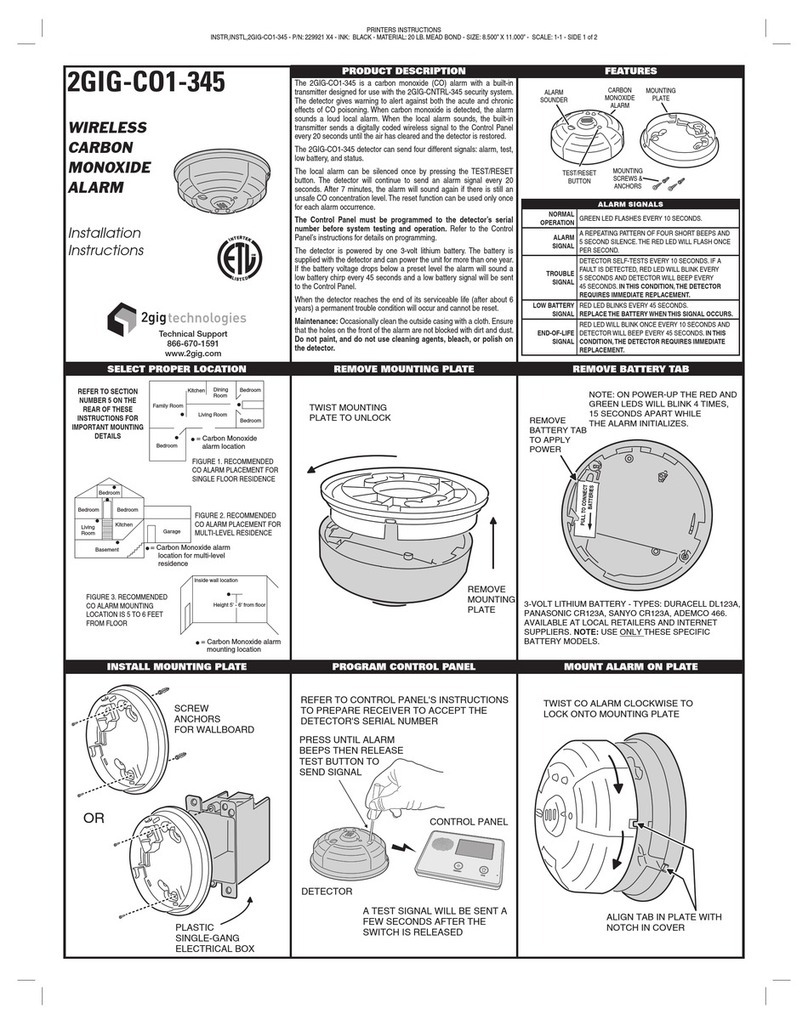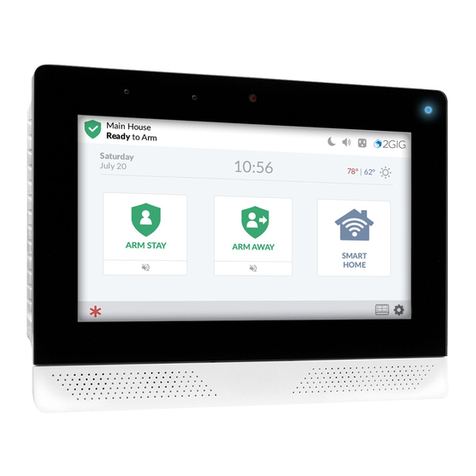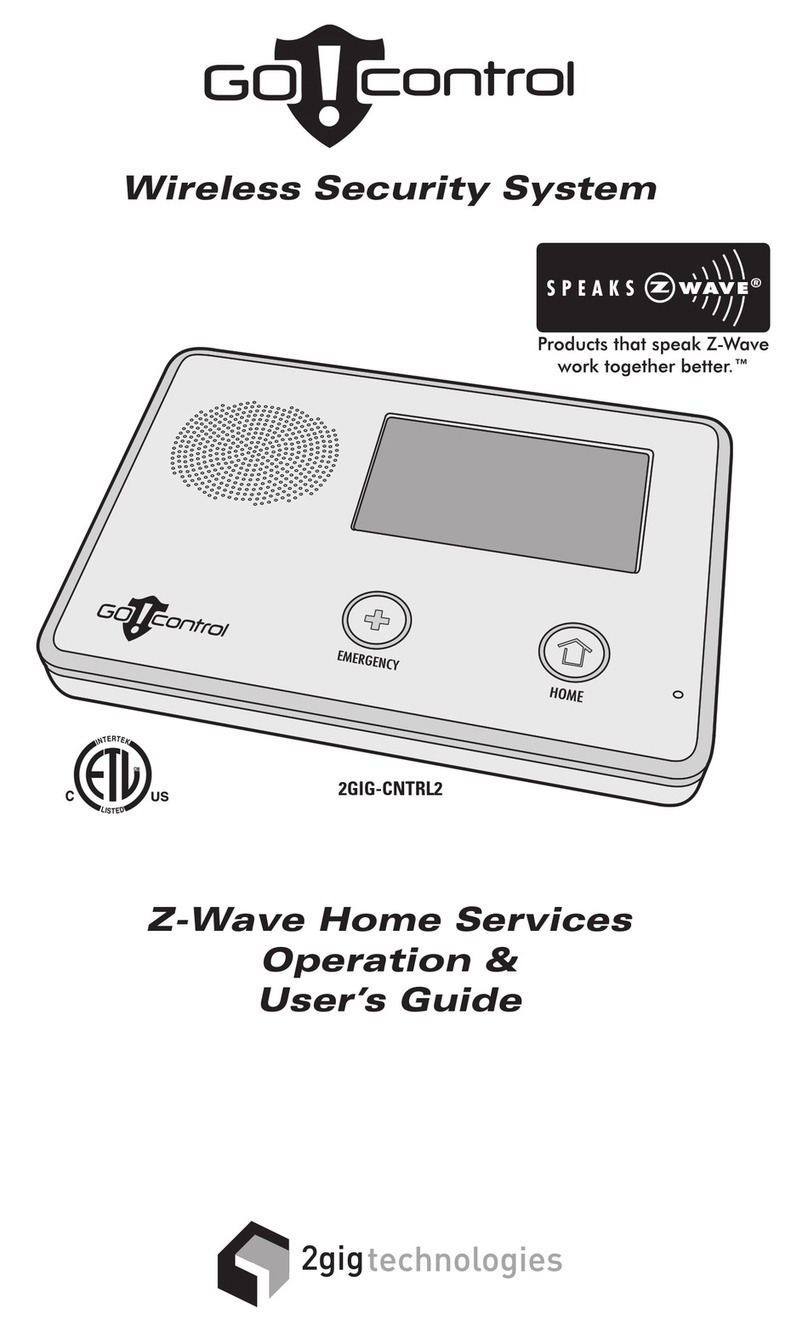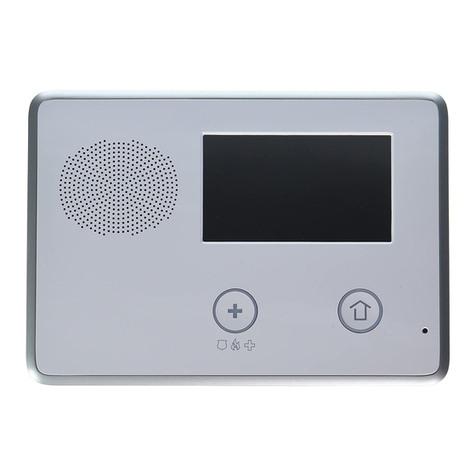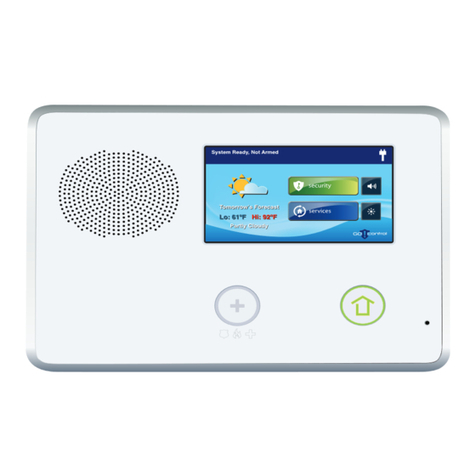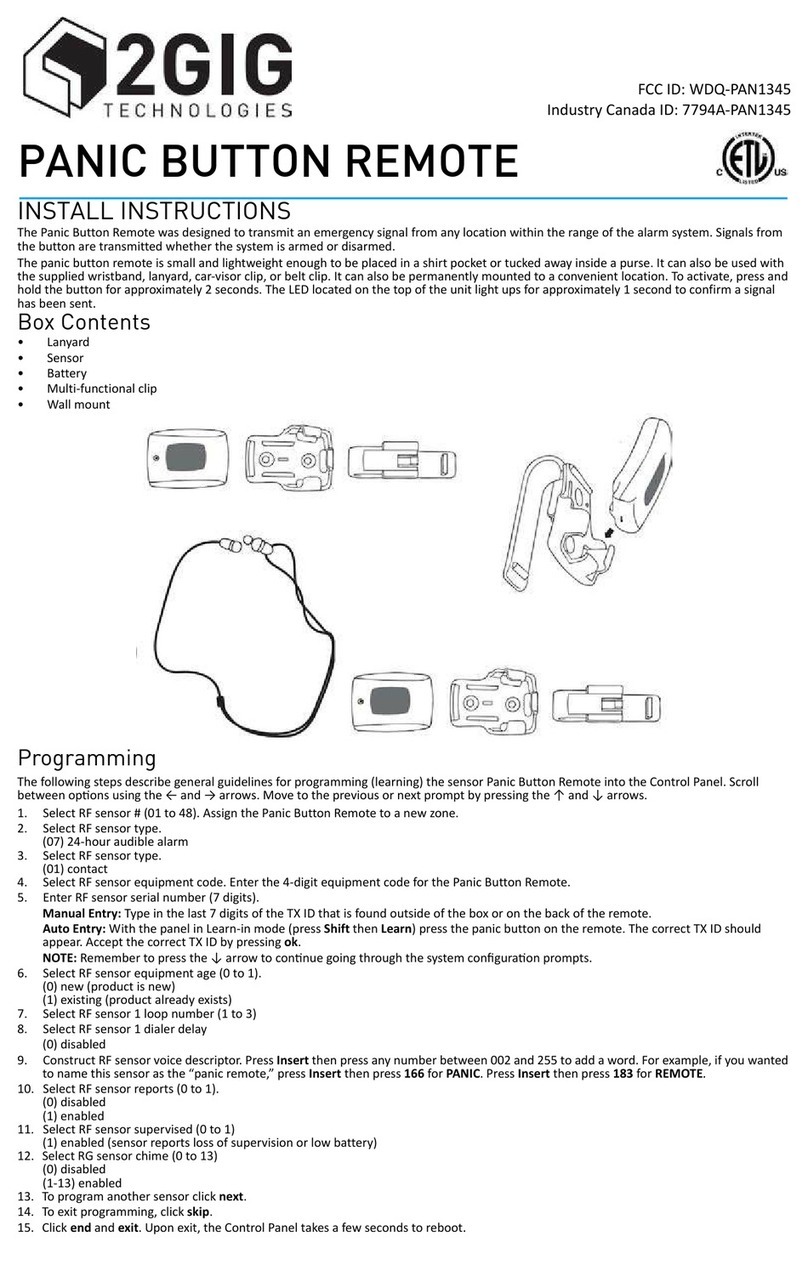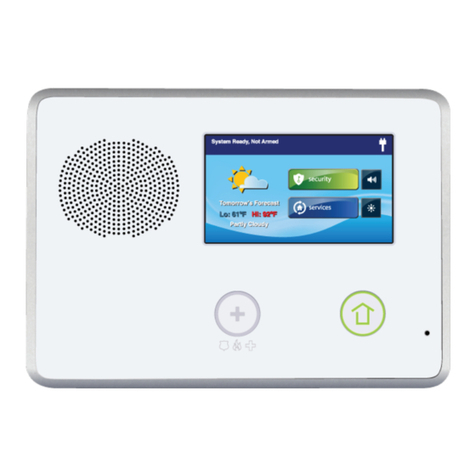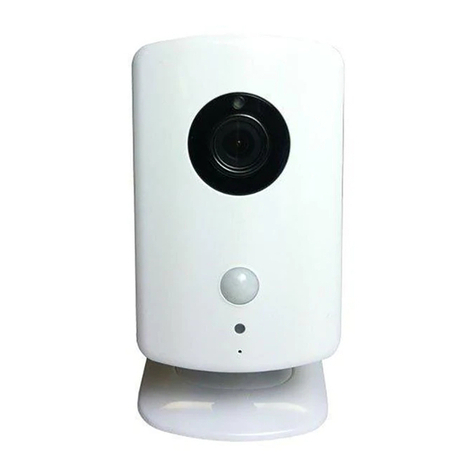
System Features and Capabilities
If you're familiar with other 2GIG Control Panels, you'll notice the new GC3
Panel from Nortek Security &Control offers the very best components of
the GC2 Panel and has been transformed by a major visual upgrade—
offering a larger touchscreen and an intuitive user interface featuring
convenient, gesture-based navigation.
Figure 1 GC3 Control Panel—Front View
Features
The system includes:
Touchscreen Display: A large, full-color, 7-in (17.8 cm)
diagonal touchscreen with an intuitive, gesture-based user
interface.
Piezo Sounder and Internal Speaker: An 85 dBPiezo
Sounder sounds external alarms. An internal speaker to delivers
voice annunciations, chimes, other system notifications.
CAUTION! Long or repeated exposure to sounds
at or above 85 dB can lead to Noise-Induced
Hearing Loss (NIHL).
Alarm Button/LEDIndicator:Tap this button to show Panic,
Fire, and Emergency buttons. For more information, see the
GC3 Security & Automation System Fingertip Guide.
Home Button/LEDIndicator: A button to wake the
touchscreen and give users the ability to return to the
touchscreen's Home screen. For more information, see the GC3
Security & Automation System Fingertip Guide.
Removable Faceplate: A removable faceplate concealing a
door lock for the Cellular Radio Module bay.
Microphone and Speaker: A built-in microphone and speaker
provide clear 2-Way Voice communication during alarm events
between users at the GC3 Panel and operators at the Central
Station.
Cellular Radio Module with Internal Antenna: A snap-in
Cellular Radio Module with an internal antenna that fits neatly in
the side panel.
24-Hour Backup Battery: A 24-hour backup battery to support
the GC3 Panel during temporary AC power failures and outages.
USBPort: Aconvenient USB port at the top of the GC3 Panel
that can be used with a USBthumb drive (not supplied)to update
the system's firmware.
Capabilities
The system includes these capabilities:
Security Codes: The system supports a maximum of 100
unique, programmable, security codes for accessing system
functions. You are provided with one (1)Master User Code, one
(1)Duress Code, and one (1)Installer Code (reserved for use by
2GIG alarm dealers and installers), and the ability to create 98
additional user codes for accessing the system.
Z-Wave®and Z-Wave Plus™ Compatibility: Installers (and
end users, if configured on the system)can add up to 232 smart
home devices to communicate with the GC3 Panel using the Z-
Wave and Z-Wave Plus wireless communication protocol. The
GC3 Panel can be included and operated in any Z-Wave network
with other Z-Wave certified devices from other manufacturers
and/or other applications. All non-battery operated nodes within
the network will act as repeaters regardless of vendor to increase
reliability of the network. This device is a security enabled Z-Wave
Plus product that is able to use encrypted Z-Wave Plus messages
to communicate to other security enabled Z-Wave Plus products.
2-Way Voice: (Optional) Operators at the Central Station can
communicate directly with end users through the GC3 Panel .
Operators can also silently listen-in after receiving a user duress
report.
Date, Time, and Weather Forecasts1:Users can view the
current date, time, and weather forecast in an easy-to-read
format.
System Vocabulary/Voice Descriptors: A list of vocabulary
words integrates with the on-screen user interface and audio
announcements. This lets installers customize the sensor names
that display on the GC3 Panel , as well as for the audible system
announcements.For example, when someone opens the front
door, the system can be set up to announce "front door."
Additional Accessories
The installer typically sets up the system to communicate with a variety of
wired and/or wireless sensors. Some sensors are visible on the wall or
ceiling. For example, Wireless Smoke/Heat/Freeze Alarms and Wireless
Carbon MonoxideDetectors. Others may be hidden in door jambs . For
example, Recessed Door/Window Contacts. Sensors might also be
installed in additional locations. For example, a Glass Break Detector and
a Passive Infrared Motion Detector.
NOTE: A variety of 2GIG and GoControl branded devices
are compatible with the GC3 Security & Automation System.
Sensors manufactured by other companies may also be
compatible with the system. For information, visit
dealer.2gig.com.
1Date, Time and Weather Forecasts are supported by most Remote Service Providers in most
regions. Consult your provider to determine if this feature is enabled.
2 SystemOverview Proprietary &Confidential
8 Copyright © 2016Nortek Security &Control LLC
